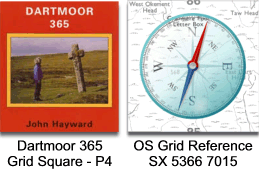
“Walkhampton Church – Earlier this century , during restoration work to the porch, a stove and flue was found. This stove was most likely used for kindling the Easter Light on Holy Saturday. Sadly it has now been blocked up again.” Hamilton-Leggett, p.2.
One source suggests that church porch fireplaces were a rare feature of English churches and it was noted that there were only three remaining in Devon plus the one at Walkhampton that has now been blocked up. So what part does a church porch fireplace play, especially with regards to Easter?
Apart from the obvious, i.e. warming people up after their trip to the church there are a couple of other uses that they would have been used for. One being to bake the sacred wafers used at communion time. It appears a utensil that comprised of two flat metal plates with handles 2 – 3 feet length were fixed ‘scissor-like’ by a pivot was used for the operation. . The wafer paste would be spread on the plates and then put into the porch fire until baked.
The main use of the church porch fire was in the Easter Light ceremony, it is thought that this is a Christianisation of the old Pagan fire festivals. The early Christian practice was to hold an all night vigil but by the twelfth century the custom had changed insomuch as it simply took place at noon on Holy Saturday or Easter Eve. This ceremony involved extinguishing all lights and fires in the church as well as those in the home which had been lit on Good Friday. After the nones service which would be held at around 3.00pm the priest, clergy and lay-clerks would process down the church preceded by someone carrying the holy water and another carrying a trident-like candlestick with unlit tapers. The assembly would then proceed to the church porch whilst reciting the 27th psalm; “The Lord is my light and my salvation, Whom I shall fear, The lord is the strength of my life, Of whom I shall be afraid….“. A fire of normally charcoal or sometimes wood was then lit in the porch fireplace and once ablaze the holy water would be sprinkled on it. Incense would then be put into the thurible and the fire ceased with it’s smoky aroma, once this had been done the tree tapers were lit from the fire. These flames were regarded as the ‘New Fire’ and would then be taken back to the altar to light that year’s Paschal Candle. Five grains of incense were then put in the candle in the form of a cross and the candle lit by the New fire. Once this had been done all the candles in the church were lit and the congregation then came to light their candles in order to take them home with which to light their home fires and candles. Don’t know what would happen if they went out on the way home?
An earlier version of this ceremony was to light a brazier which stood outside the porch by means of sunlight and a burning glass or crystal, later this was replaced by a flint and metal striker and later still the fire was lit from that burning in the church porch fireplace. Once the ceremony of the Easter Light and New Fire had been completed and the fuel in the brazier carbonised these charcoal sticks would be taken home and placed in the roof thatch. This was said to protect the roof from lightning, fire and hail, other sticks would be placed in the corn fields to protect the crop from disease, storm and vermin. Just to make doubly sure of a good harvest the ashes from the fire would be mixed with the corn seed and then sown and farmers would swear blind seed treated in such a manner always produced a better crop. This belief can be found echoing in a poem from the sixteenth century:

“On Easter eve the fire all is quencht in every place, And fresh again from out the flint is fetcht with solemne grace: The priest doth hallow this against great daungers many one, A brande whereof doth every man with greedie mind take home, That when the fearefull storme appears or tempest black arise, By lighting this he safe may be from stroke of hurtful skies.”
So what did all this rite of the Easter Light mean in Christian eyes? The act of extinguishing all the lights and fires was representative of the ‘old law’ being put in the past, the ‘New Light’ symbolised the new covenant of Christ and his ‘Light of the World’, in other words it signified Christ’s resurrection. So although there is no evidence of the fireplace or the custom of the Easter Light the church at Walkhampton still has a lot to see and ponder upon.

If you are a Dartmoor 365 enthusiast then Hayward’s suggested location for this grid square is the hamlet of Huckworthy and its bridge and ford. It is less than 1 kilometre away, simply go along the footpath by the church which joins the lane, turn left, follow this to the next junction, turn right and head to Huckworthy.

Hamilton-Leggett, P. 2016. A Brief Guide to St. Mary the Virgin, Walkhampton. An online source found – HERE
 Legendary Dartmoor The many aspects past and present of Dartmoor
Legendary Dartmoor The many aspects past and present of Dartmoor
